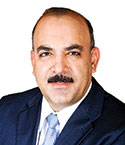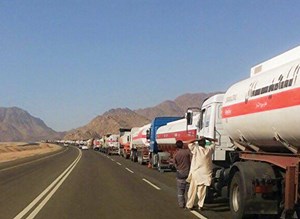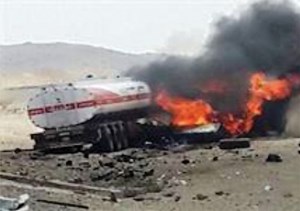Oil and gas in the capitals
Saudi Arabia is back to its swing producer role. That was the most important outcome of the agreement among OPEC and non-OPEC producers that took place last December in Vienna. While some analysts might view the change in Saudi policy as a reversal, especially after the change at the helm of the Saudi oil industry from the former oil minister Ali Al Naimi to the current energy minister Khalid Al Faleh, others believe it is an evolvement.
The market share strategy was meant to be temporary, to slow down the growth of shale oil production and regain the driver’s seat in the global oil markets. The Saudis led the effort overtly and covertly to manage cooperation among oil producers to cut production. Most importantly, Saudi Arabia made the largest cut in the shortest period and announced it would cut by more than agreed on. Recent data show that Saudi Arabia cut crude production in January by more than 425,000 bpd. These efforts, the cut, and the participation of non-OPEC members, proves that OPEC, as an organization, remains irrelevant in the oil market.
It is all about Saudi Arabia. Major oil producers within OPEC were practically exempt from the cut in one way or another, including Nigeria, Libya and Iran. Production of others was declining because of lack of investment or planned maintenance. Also, statistical analysis shows that about 40% of oil price fluctuations in 2016 could be explained by changes in Saudi oil production.
Historically, Saudi behavior fits the swing producer role. It is the only country that can claim the title. The characteristics of a swing producer are: a price-maker with spare capacity of various crudes that can be dispatched almost immediately, with little investment to various outlets in the global oil markets. On the academic side, the price elasticity of demand for the swing producer has to be larger than one (in absolute terms), and only Saudi Arabia meets this condition.
As Saudi Arabia goes back to its swing producer’s role, it is clear that the Saudis want higher oil prices. How high, you might ask? The Saudis want shale oil production to grow, but they do not want it to grow significantly. The Saudis want a price that allows shale oil production to grow in a way that is commensurate with growth in global oil demand. Any growth higher than that level means loss of market share for some OPEC members. Loss of market share leads to a cut-throat competition, as we saw in 2015 and 2016.
As prices increase, U.S. shale oil production will continue to increase until the Saudis cap prices by using their spare capacity to increase production. However, the Saudis will only be able to cap prices, as long as their spare capacity is larger than any shortages in the market. Therefore, the price the Saudis want in the long run is not a function of their budget and financial needs, it is a function of the growth of U.S. shale production. Technology improvement, and lower costs in shale, mean lower prices for all.
Aramco IPO: Aramco officials stated that the IPO of a small portion of the company will take place in 2018, mostly in multiple markets, and will be the largest IPO in the world. They also stated that oil reserves are included and have been confirmed by independent auditors. However, even officials acknowledge that there are several technical, legal and political difficulties, especially in identifying the markets for listing. Given the desire to diversify income sources, Aramco’s path to growth may not be growing reserves and production, but rather a transformation to a conglomerate, global energy company with major expansion in downstream and renewable energy.
Renewable Energy: Khalid Al Faleh, the Saudi energy minister, announced a $30 billion-to-$50 billion energy program that will be developed over the next eight years. Companies will be able to bid in April for the two 700-megawatt solar and wind projects in Aljawf and Tabuk, in northern and northwestern Saudi Arabia. Aside from the technical reasons for the choice of the locations, other factors support the viability of these projects. For example, oil is shipped to power stations by tankers in these areas from afar, causing congestion on roads that are known for horrific accidents, Figs. 1 and 2.
While there is no short-term impact on the oil market in the medium term, the impact of these projects on reduction in domestic oil consumption and increasing oil exports is limited. The impact in the long run is significant. These renewable energy projects will enable Saudis Arabia to be an even a more powerful swing producer than in the past. ![]()

- Applying ultra-deep LWD resistivity technology successfully in a SAGD operation (May 2019)
- Adoption of wireless intelligent completions advances (May 2019)
- Majors double down as takeaway crunch eases (April 2019)
- What’s new in well logging and formation evaluation (April 2019)
- Qualification of a 20,000-psi subsea BOP: A collaborative approach (February 2019)
- ConocoPhillips’ Greg Leveille sees rapid trajectory of technical advancement continuing (February 2019)




